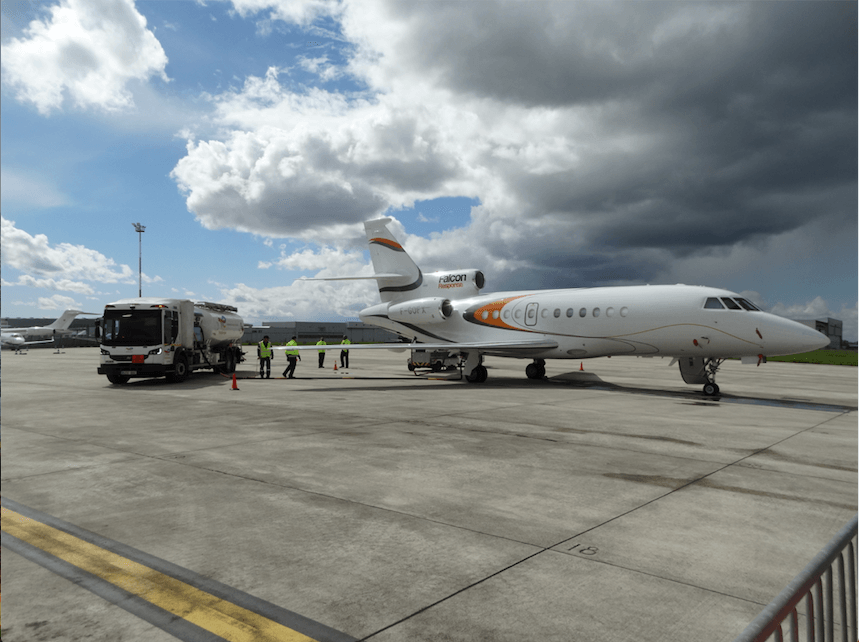On April 12, the ADP Group demonstrated a large part of what can be done around an aircraft at Le Bourget airport in terms of low-carbon aviation, including SAF refueling and ground operations using electric vehicles.
The ADP Group began an eight-week test campaign around decarbonized aviation at Paris-Le Bourget Airport on April 12. "This will allow the platform's eight operators to familiarize themselves with everything that can already be achieved in terms of decarbonized aviation at an airport. These tests are being carried out at Le Bourget because the procedures are simpler, but it allows the operators to see that decarbonized aviation is already very concrete," explains Edward Arkwright, executive director of the ADP Group.
In front of an audience of journalists, it was Dassault Aviation that opened this test campaign with a thematic demonstration that began with the towing of a Falcon using an electric runway machine supplied by the specialized company TLD (AES Group), which has just delivered a dozen electric machines to the airport, such as tractors, freight elevators or baggage conveyors. Note that the company can offer new electric machines, but can also carry out retrofits to modify the types of motorization of existing machines.
FAS at 30% to refuel
The Falcon was then fueled with SAF ("Sustainable Aviation Fuel") using a TotalEnergies truck, which is itself electric. The biofuel supplied was a 30% blend, even though, as with conventional airliners, the SAF limit for business aviation is 50%. It should be noted that the supply of SAF has only just begun at Paris-Le Bourget airport, since TotalEnergies plans to deliver a total of 1,000 tons of SAF, which corresponds to 2 to 3% of the airport's consumption. TotalEnergies has a dedicated 100 m3 tank at the airport, as does the airport's second fuel supplier, WFS (World Fuel Services), which has its own tank. They are expected to be joined soon by Shell.
Making Le Bourget a showcase for decarbonization
The Falcon was then electrically recharged by a GPU (Ground Power Unit), which can save the aircraft from using its own APU (Auxiliary Power Unit). "The electrification of our airport fleet should increase from 15% in 2022 to 30% in 2023, reaching 100% in 2025," explains Sébastien Couturier, director of Paris-Le Bourget Airport. "With the use of fully electric machines, we are able to reduce carbon emissions on ground operations by 40%," he says. But the head of Le Bourget airport is looking for other ways to use clean energy, and mentions the possibility of installing photovoltaic panels, especially on the roofs of hangars. "With all the media attention around business aviation and the environment, we have to move faster than other airports. Paris-Le Bourget airport must be a showcase for the decarbonization of air transport," concludes Sébastien Couturier.
Découvrez cet article sur Air&Cosmos

